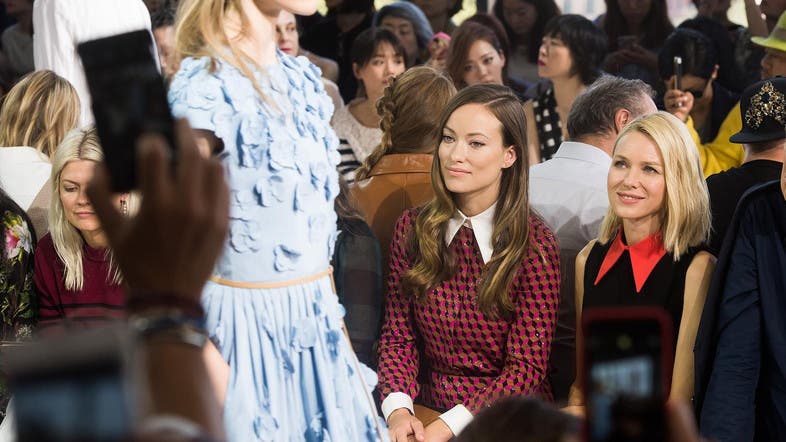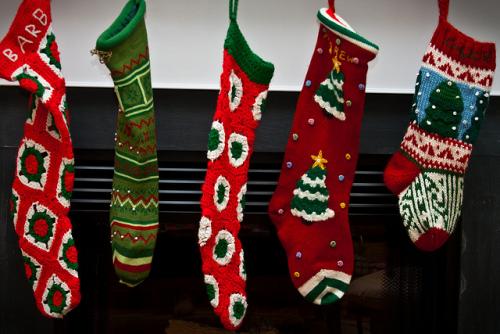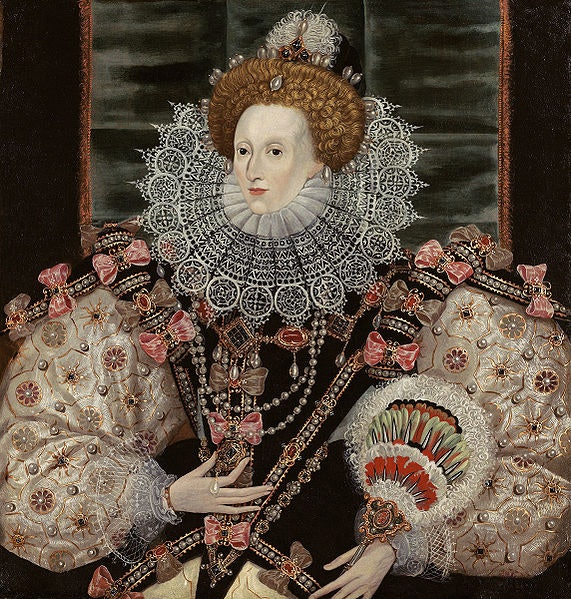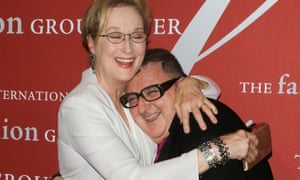On a Monday morning in Stoke Newington, London, the model Tessa Kuragi
arrives for our brunch wearing a leather harness. In fact, it’s the “Tessa
Harness” by Tamzin Lillywhite, named after her, and it snakes across her
stomach, up her breastbone, and around her throat. She’s wearing it over a black
turtleneck sweater; she has dozens of freckles, velvety red-wine lipstick, and
an immaculate blunt bob. At first glance, I think of both Louise Brooks and
Wednesday Addams.
“I’ve got a weird baby face — it’s ridiculous,” she says. Her voice is a
little gravelly, and full of laughter. “If I do certain pictures and I’m not
wearing makeup, I look like I’m 11 … Which is cool, because it suits my alter
ego, who is probably about 5.”
You may know Kuragi’s striking face, with its European, Asian, and Jamaican
heritage, from her 2014 Diesel campaign — or her shoots with Olivier Zahm for
Purple magazine. She enjoys the ambiguity around her age (and therefore will not
confirm it) because for a long time, she has harnessed the sweetness of her face
for erotic purposes. That little-girl alter ego can be innocent and submissive,
but is formidable in her own way; since long before the fashion work
materialized, Kuragi has been posing for art photographers and filmmakers,
sometimes in bondage, and often in surreal, sexual settings.
In person, there is an erotic power about her. Much of it comes from her
intellectual confidence: She has a broad cultural framework, and when she talks
about her work, she makes reference to creatives like the Japanese artist Araki,
the photographer Francesca Woodman, and the writer Philip K. Dick. But there’s
no denying that as well as an overflowing stock of ideas, Kuragi also has a
classic pin-up’s physique her figure is an abundant hourglass, often wrapped in
corsetry, and she has creamy, clear skin. She is innately sexy. For Zahm, she
posed in Christian Louboutin’s Hot Chick stilettos and a selection of harnesses,
arching her back against a zebra-print rug, and hanging elegantly upside-down
from a chair. “She transforms herself into this fetish, erotic object,” Zahm
tells me. “I love this kind of girl, who is able to create a sort of fiction in
her own life.”
Kuragi has embraced sadomasochism both personally and professionally — and
credits it with freeing her from bad relationships. “I used to go out with a guy
who was horrible, but sexually I found him really exciting. When [I started
modelling], it was an exploration of my own sexuality. I was like ‘There’s this
thing called S&M, and it’s consensual, and it’s just a role-play, so they
don’t have to be bastards.’ It was an eye-opener. I thought ‘This is great — I
don’t have to go out with horrible men anymore.’”
This realization was triggered by her first happy relationship, with the
photographer Marc Blackie, whose work jarringly combines eroticism with the
uncomfortable and sinister. He was the first person to tie her up for a shoot,
and introduced her to many more artists with whom she worked and continues to
work. “With my favorite shoots, I’ve had a relationship with the photographer,
sometimes for years,” she says. “It’s very important to me that they really know
what I’m about and they can portray that, and I can collaborate with them to
produce a work that I feel means something.”
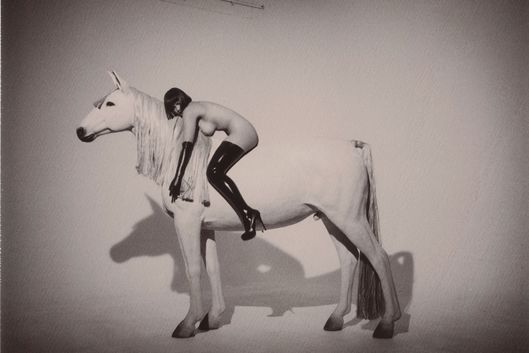
Fashion didn’t enter much into Kuragi’s work until last year, when Nicola
Formichetti came across her in Sang Bleu magazine and cast her for the SS14
Diesel campaign. “I remember I was in Marseille on a shoot and I got this phone
call from a casting director,” she says. “It was like, we’re flying you first
class, putting you in this nice hotel, and you’re going to work with Inez and
Vinoodh … So it was a kind of Cinderella moment. I mean, not that I hadn’t been
in very rich artists’ houses, but that was a very different world; fashion
wasn’t really something that I’d thought about.” She nailed the pictures —
Diesel used the very first photograph of the day.
Following the campaign, Kuragi was signed by Premier Artists, the talent
division of Premier Model Management. “We do send her out as a model, but she
already has a bit of a profile,” explains the division’s director, Emily Sykes.
Fashion work has continued to come in, though “realistically, I’m not going to
be doing toothpaste commercials,” says Kuragi. “Commercial modelling is out.”
When I ask her how she defines herself, she suggests “something like ‘surrealist
muse’ — I imagine myself as somebody who would’ve posed for Man Ray.”
Sykes has been impressed by Kuragi’s ability to attract high-end work; the
photographers Mario Sorrenti, Emma Summerton and Ellen von Unwerth have all
reached out to her. “I think mainly it’s because she is exceptionally
comfortable with herself,” Sykes says. “There’s a real confidence about her — a
power and a femininity and a sexuality that she comes with, and I can see why a
lot of creatives are getting in touch and actively wanting to work with
her.”
Mickey Boardman, editorial director of Paper magazine, is among those in
fashion who are observing Kuragi from afar; he thinks she’s bringing something
that the industry often lacks. “So much of fashion, where women are involved, is
asexual — because a lot of it is 16-year-old girls who are beautiful and
fabulous, but who are adolescents,” he says. “They can be sexy in a way, but not
in the same way that Tessa can be, because she is va-va-voom. Just looking at
her, I get a giant sex vibe — and I’m gay.”
Of all Kuragi’s recent work, her favorite has been a major shoot in the
autumn-winter 2015 issue of AnOther magazine, which was photographed by Nick
Knight and styled by Katy England. “Nick found me on Instagram,” she says. “We
were emailing back-and-forth for maybe three months, talking about what we
wanted to do — to combine fashion with his take on my story. I told him to read
a book that I really like, which is George Bataille’s Story of the Eye, and I
was sending him my dreams. Maybe I wanted to do something with my fantasies,
too.”
When I call Knight, he is effusive about working with her. “I said to her, ‘I
want to do a story about fantasy and reality,’ and she said ‘Well, my fantasy is
my reality.’ I thought that was rather lovely,” he recalls. For one of the
images, fabric was pinned in several places through the skin of her arm – very
much of her own volition. “Part of the reason that I’m excited to work with her
is because you’re not imposing something on her – this is something that comes
from her,” says Knight. “Her sexual fantasies are very heartfelt and very
strong, and seem to be very present in her life. And something feels much more
exciting about working with somebody who is actually like that, rather than
imposing those fantasies on somebody who is a model, who perhaps doesn’t really
know how she feels about her sexuality. Tessa’s very aware of her sexuality, and
very aware of her joy in experimenting.”
This kind of collaboration with a photographer is, for Kuragi, the pinnacle
of her working life. “I think people sometimes underestimate how much I’m
involved in creating a picture from the start, rather than just showing up to a
shoot and doing what I’m told,” she says.
Though she grew up in Kingston, Jamaica, she found the Christian country too
restrictive and conservative: She tells me that even oral sex is considered
perverted there, though everyone does it behind closed doors. She is not in
contact with her Jamaican father, but still close to her English mother, who has
– with some effort – made peace with Kuragi’s work. “She said to me one day, ‘I
can see it’s your catharsis, it’s your way of managing whatever’s going on in
your head, and it’s your art.’ So she’s fine with it [now], although she still
makes the odd comment.”
Kuragi has been in London for about 15 years, and after brunch she takes me
for a walk in nearby Clissold Park. Later, she will go to her day job — a
part-time career that runs parallel to her modelling — but she doesn’t want to
talk about it. It is a part of her identity that belongs not to Tessa Kuragi (a
pseudonym that was inspired by the Japanese word for jellyfish), but to the
other Tessa — and her real last name remains private, too.
She does, however, talk about her boyfriend, graphic designer Jon-Ross Le
Haye, with whom she has recently published Bruise Album. The book is a
limited-edition, Victorian-style album of photographs of Kuragi’s bruises, each
of which was created by a sexual encounter. “I find them pretty,” she says. “But
it’s more than that, because they signify a receiving of violence or pain as a
mark of trust and sacrifice and devotion. It’s a visual reminder of something
you’ve endured for someone that you care about — and usually quite an intense
moment.”
Now that Kuragi has a fashion career, it will exist alongside these personal
projects, not instead of them. She sees herself “probably strictly in high
fashion, or anywhere where fashion crosses over into art,” and she’d like to
work with Yohji Yamamoto and John Galliano — or Alexander McQueen if he were
still alive. “I have so many ideas,” she says. She has skipped the early
“go-sees” stage of modelling, and entered the industry with a firm sense of who
she is and who she could be. “I think she’s crafting her own image,” says
Knight. “It’s a powerful position to be in.”
